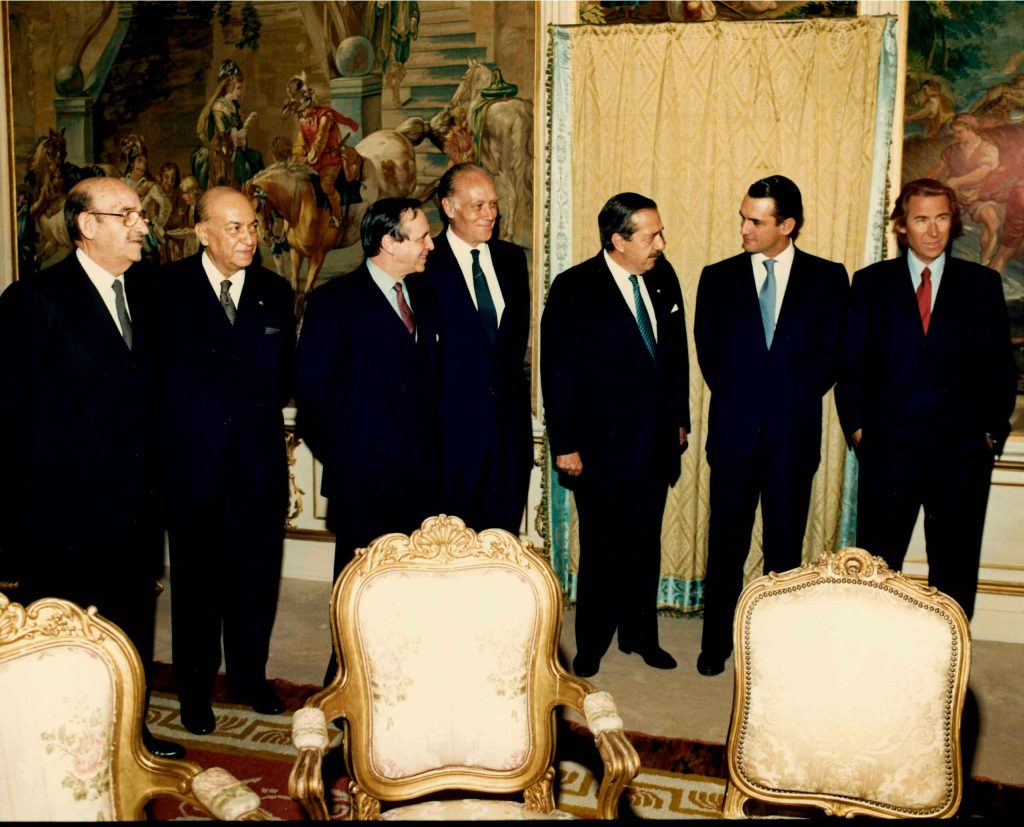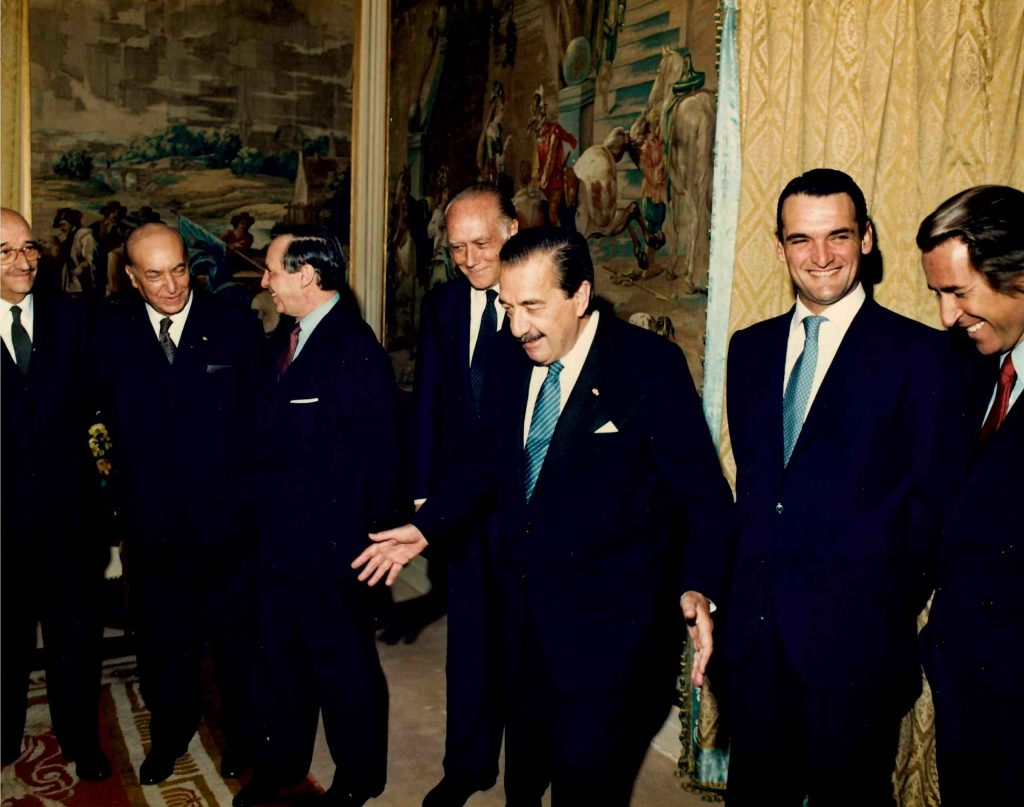BANKER
The Meetings of the Seven Greats
Although Luis Valls used to say that the myth of the Seven Great Bankers was a creation of journalists, the truth is that he was the promoter of these gatherings and insisted that they take place periodically. These meetings basically involved having lunch together. The tradition began in the early seventies, with the idea that the host would rotate from one bank to another. However, they almost always met at Banesto’s headquarters on Paseo de la Castellana, behind the legendary Jockey restaurant. The seven bankers would gather in the presidential dining room, where meals were served by the famous chef of the trendiest restaurant at the time. If the meetings took place at Popular, the meal would be served in the Beatriz Building, at a beautiful round onyx table with an Italian-style protocol, which was Luis Valls’ favorite.
Why These Meetings?
When asked by the newspaper Expansión, Luis Valls responded to the question in the form of a column 1 : For pleasure, as one of his favorite phrases was: “It is a divine pleasure to converse with friends,” attributed to the philosopher Plato. For tradition. He mentioned that the custom had lasted “almost thirty years” by then. The third reason was that – according to him – “presidential prudence (the first cardinal virtue) is better practiced if one can discuss issues with colleagues in the friendly setting of a lunch. Without interaction, there is no friendship.” In his doctoral thesis on Luis Valls2, Jaime Díez Yáñez mentions that the authorities at the time did not look favorably upon the meetings, which the Director General of the department for the Defense of Competition criticized harshly. To which he argues: “Perhaps they should have also invited the Director General to the meetings so he could see firsthand the level of coordination among the seven great banks, which competed fiercely with each other. The purpose of the lunches was not anti-competitive, neither in theory nor, much less, in practice. The aim of the lunches was to ensure that fair play was respected, which, in practice, was perfectly aligned with the ideal of competition, an ideal that the authority seemed to defend with theoretical enthusiasm but very little practical intelligence.”
The Role of Luis Valls
This same thesis mentions that not only did Luis Valls push for the Seven Greats’ lunches to take place, but he also intended them to be helpful; he would bring newspaper clippings about everything published about each bank since the last meeting to discuss with his colleagues. As Ángel Gómez Escorial declares3, Luis Valls acted even as a behind-the-scenes host. He would arrive first, tend to listen – to make the others talk – and if he saw any banker more isolated, he would give them more attention. He usually left the meeting last without rushing. Sometimes, he was the only one who stopped to chat with journalists waiting at the door to comment on the content of the meetings with the press.
Hostile Takeover and a Farewell
It is easy to find references in the press of the time to how his relationships with other Spanish bank presidents became more and more complicated. The attempted hostile takeover of Banesto by Banco de Bilbao in 1987, according to Valls himself, ended the golden age of courteous behavior among Spanish banks. In 1992, he reflected on this 4 , seemingly with a sense of loss: “Until five years ago, the relationship among Spanish bankers was excellent. They acted like gentlemen. The competition between banks, poaching clients, and companies – almost always by surprise – did not dampen the good humor or disrupt the always exquisitely maintained good manners. But that hostile takeover marked an end and a beginning. Since then, we no longer meet, nor are we gathered. If someone had told us that one of the seven would pull out a knife to stab another, we would all have thought of someone else. No one would have pointed to José Ángel Sánchez Asiaín, who was the one who did pulled out the knife”.
Good Relationship
In any event, the good rapport among most of them continued despite the end of the lunch tradition. In an article written by Valls 5 he explained it with a sports metaphor: “Just as cyclists get along well with each other, so do bankers, even though they compete. Lunches together help improve relationships and overcome differences. The so-called personal chemistry is a contributing factor, but the fact that major banks have different primary objectives means no envy or comparative grievances don’t exist. Each one, more or less, achieves what they want: to be the biggest, the most international, the leader, to have the most important business group, or to achieve the best ratios.”.
Bibliography
(1) Column “Por qué nos reunimos los banqueros” published in Expansión (13/10/89). (2) Thesis “Luis Valls. Banco Popular. Un repertorio”, by Jaime Díez Yáñez. (3) GÓMEZ ESCORIAL, A., “Luis Valls, desaparece un mito”, Banca 15, 31/03/2006. (4) Mariví Casanueva includes this statement in her article “El ‘último mohicano’ de la banca española” published in the supplement Nueva Economía of El Mundo (26/10/2003). (5) Article written by Luis Valls, titled “De la crisis a la diversidad” and published in Diario 16 (15/11/92).



